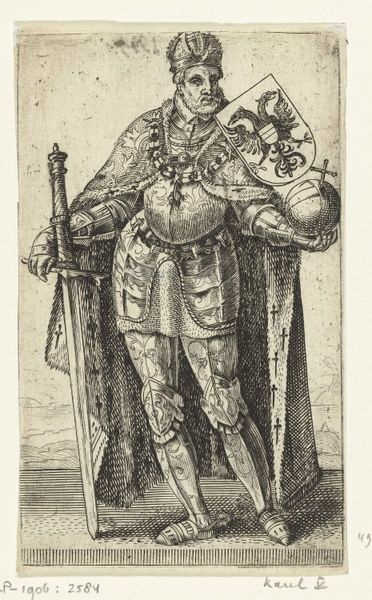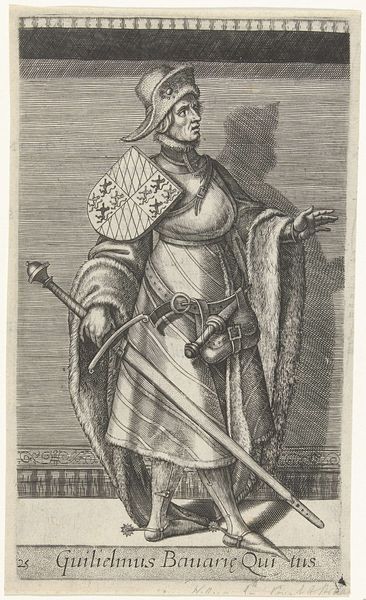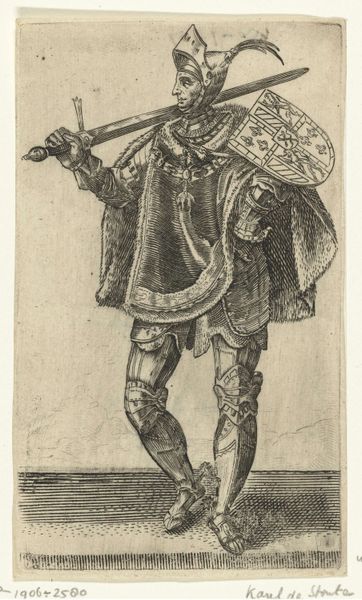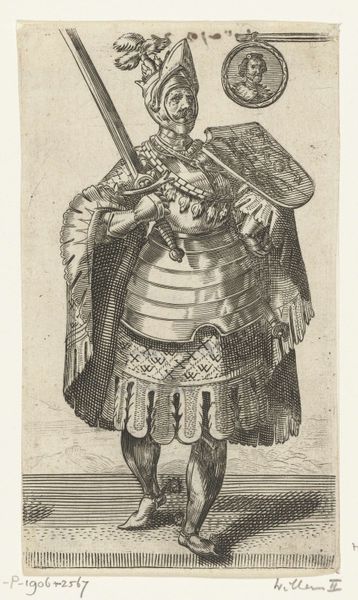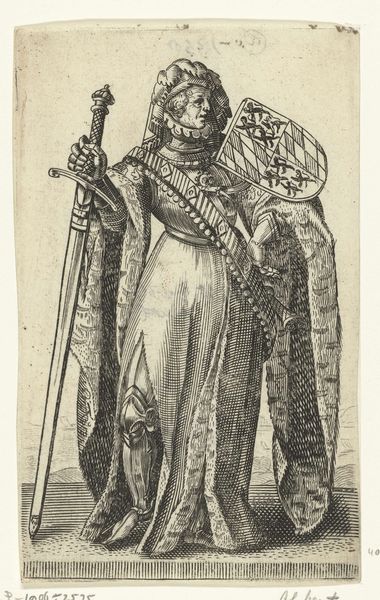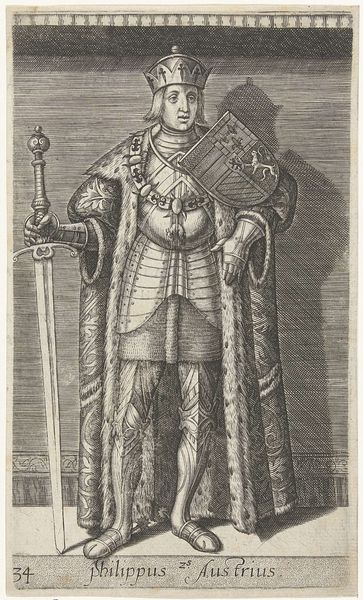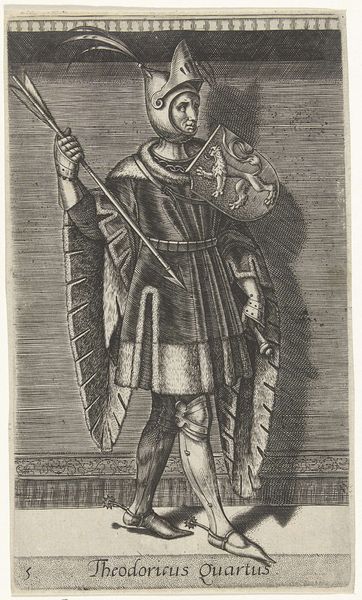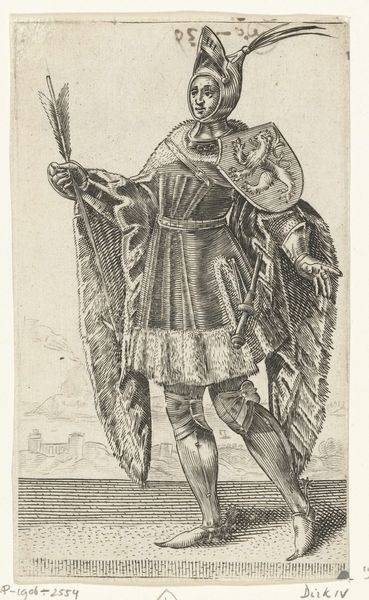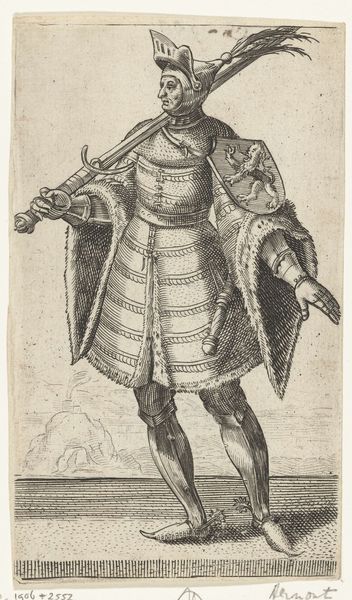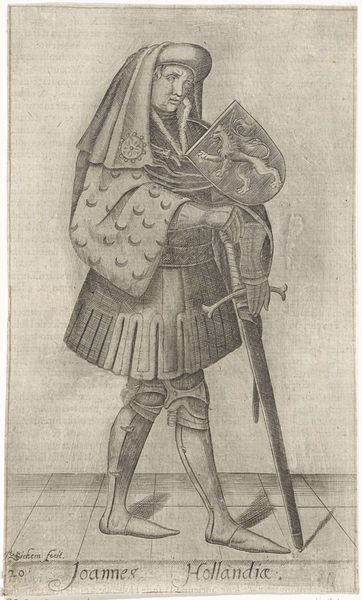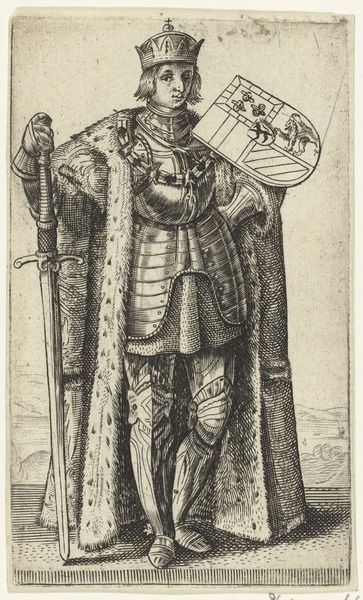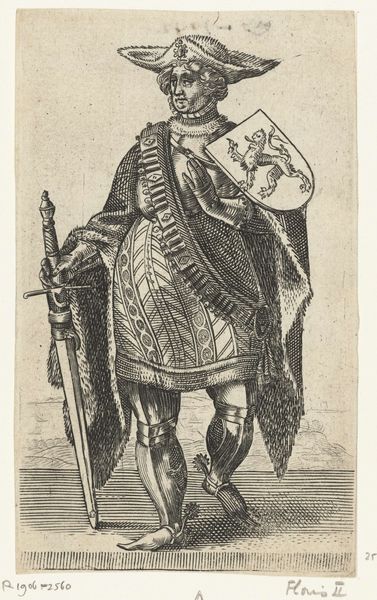
print, engraving
#
portrait
#
baroque
# print
#
pen sketch
#
history-painting
#
engraving
Dimensions: height 130 mm, width 80 mm
Copyright: Rijks Museum: Open Domain
Editor: Here we have Adriaen Matham’s “Portrait of Dirk I, Count of Holland” from 1620. It’s a print, an engraving to be exact. What strikes me is how this seemingly straightforward depiction of a historical figure feels almost staged. I mean, look at the theatrical pose and meticulously rendered armor. How would you interpret a piece like this? Curator: Indeed. What appears at first glance to be a historical document, is deeply entangled with the social and political conditions of its making. This engraving wasn't necessarily made for the masses. Instead, prints like this, circulated amongst elite circles. Consider the function of portraiture at that time: more than likeness, it conveyed power. This depiction serves a specific narrative. How might the artist’s choices bolster or challenge the sitter's claim to power, even retrospectively? Editor: Well, the detailed armor and weapons immediately signify power, right? And including the coat of arms…it’s like a visual declaration. But why create a print of someone who lived so long ago? Is Matham making a comment about Dutch identity in the 17th century? Curator: Precisely! Matham is invoking a past figure to legitimize a contemporary social order. Consider how visual media contributed to constructing historical narratives. Can the image serve a political purpose, like inspiring patriotism or legitimizing specific bloodlines? Also, given the printmaking process, it allowed wider dissemination. This wasn't about objective representation; it was about creating an image of authority that could be replicated and circulated. What power dynamics do you think that introduces? Editor: That's fascinating. It seems the "Portrait of Dirk I" is much more than just a picture; it’s a statement, a carefully constructed representation embedded in layers of history and political messaging. Thanks, I hadn't thought about it that way before. Curator: The beauty is uncovering the layers. It changes the way we see this piece, going beyond aesthetics to question what is being said, and for what, and whom.
Comments
No comments
Be the first to comment and join the conversation on the ultimate creative platform.
